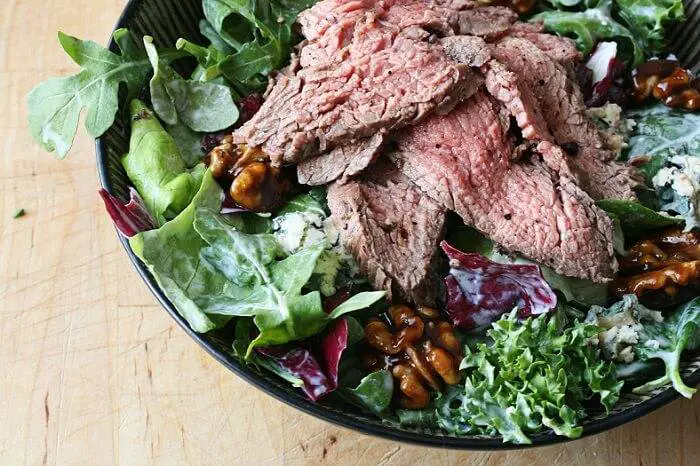With modern fast lifestyle obesity becomes a major world problem, while maintaining normal body weight with healthy diet and physical activity turns out to be complex and time consuming.
In the year 2000, industrialized UK and USA were the most obese nations, while populations in France and Italy, where healthy culinary traditions are highly appreciated, showed lower obese rates (1).

Low-carb diets consist of reduced intake of carbohydrates, which results in the use of body proteins and fats as energy sources. Clinical studies suggest that it takes 2-4 weeks for a body to adapt to a low-carb high-protein diet; regime that has been proven successful in weight loss (2-5). When compared to low-fat and Mediterranean diets, low-carb are the ones with greatest weight loss results (6).
How do low-carb diets work?
The metabolic state during no or little consumption of carbohydrates found in food i.e. low-carb diet, has been compared to starvation. Under these conditions, muscle proteins and fat stores are used as energy resources, and loss of lean body mass is an accompanying process.
The difference between low-carb and starvation metabolism is that during low-carb diet glucose levels are maintained despite lower carbohydrate consumption and when enough dietary protein is provided, there is no breakdown of proteins originating from the body (7).
Insulin and glucagon
There are two hormones directly correlated with glucose entering the blood – insulin and glucagon.
Insulin inhibits lipolysis (fat breakdown) and stimulates fatty acid production – this is why its increased levels are correlated to obesity (8). Glucagon is active in the same processes as insulin, but it has opposite effect – it activates fuel breakdown and prevents energy storage.
When carbohydrate consumption is reduced, insulin production is lowered and glucagon production is increased – metabolic effects beneficial for the individuals. Also, increasing the protein intake during low-carb raises proteins in the liver and brown adipose tissue which is related to greater energy production (9).
During a low-carb diet the body is in a dietary ketosis – a harmless physiological state as blood pH is tightly regulated (10). During ketosis the amount of ketone bodies produced by the liver is increased in the circulation, and it is a general belief that this leads to appetite decrease. However, clinical studies examining how ketosis alters appetite are inconclusive (11).
Health benefits and risks
There are numerous positive sides of practicing a low-carb diet, like reduction in LDL and increase in HDL, results published by groups from Kuwait, Bahrain and the USA. It has been suggested that practicing a low-carb diet may be beneficial in the treatment of hyperlipidemia, hypertension and metabolic syndrome, and it can also reduce cardiovascular risk factors (12).
On the other hand, a common fear in this routine is the possible harmful effect on the kidneys, as they have to work harder and excrete more nitrogen due to higher protein presence in the diet. While in general weight loss has positive psychological impact and improves the quality of life, there are also side effects of practicing low-carb diets.
Namely, patients have reported nausea, muscle cramps, headaches, insomnia and stomach problems (13, 14). Despite the general positive results from practicing a low-carb diet medical practitioners still question its use. Extensive clinical trials examining long-term effects of this way of life are still needed so that physicians can fully embrace its positive influence on people’s overall health.
1. Eisenberg DM, Burgess JD. 2015. Acad Med
2. Halton TL, Hu FB. 2004. J Am Coll Nutr 23: 373-85
3. Layman DK, Boileau RA, et al.,. 2003. J Nutr 133: 411-7
4. Vesely JM, DeMattia LG. 2014. FP Essent 425: 11-5
5. Clifton PM, Condo D, et al.,. 2014. Nutr Metab Cardiovasc Dis 24: 224-35
6. Matarese LE, Pories WJ. 2014. Nutr Clin Pract 29: 759-67
7. Westman EC, Feinman RD, et al.,. 2007. Am J Clin Nutr 86: 276-84
8. Pogozelski W, Arpaia N, et al.,. 2005. Biochem Mol Biol Educ 33: 91-100
9. Paddon-Jones D, Westman E, et al.,. 2008. Am J Clin Nutr 87: 1558S-61S
10. Manninen AH. 2004. J Int Soc Sports Nutr 1: 7-11
11. Gibson AA, Seimon RV, et al.,. 2015. Obes Rev 16: 64-76
12. Bazzano LA, Hu T, et al.,. 2014. Ann Intern Med 161: 309-18
13. McClernon FJ, Yancy WS, Jr., et al.,. 2007. Obesity (Silver Spring) 15: 182-7
14. Yancy WS, Jr., Olsen MK, et al.,. 2004. Ann Intern Med 140: 769-77








































